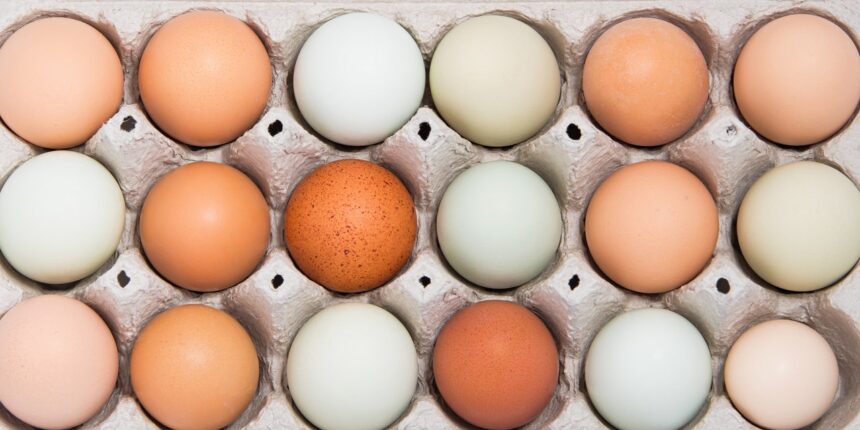Fewer hens equals fewer eggs equals higher prices. It’s simple supply and demand: When there’s less of a commodity to go around, its value increases. In one recent example of this, the diner chain Waffle House added a 50-cent surcharge to every egg sold to account for the rising costs, per the AP.
So yes, the cost of eggs in general has spiked. At the beginning of 2024, a dozen averaged about $2.50, per the US Bureau of Labor Statistics, and increased to $4.15 by the end of the year. In a February 7 USDA report, the organization listed the most recent average cost at $7.34 a dozen.
Good to know, but our original question still remains: Why has the price of organic, cage-free, free-range, and pasture-raised eggs stayed relatively stable as the price of regular eggs has skyrocketed? It’s actually pretty straightforward: Chickens used to lay those kinds of eggs haven’t been hit as hard as those responsible for the regular type, according to Dr. Tabler. It’s not that higher-end layers are less susceptible—in fact, chickens that have access to the outdoors (like free-range and pasture-raised flocks) are actually more likely to come into contact with potential disease vectors like wildlife, Dr. Tabler says. “There’s more disease risk outside than there is inside the chicken house,” he explains.
Rather, it’s a ruthless numbers game that comes down to a difference in scale. Farming operations that produce regular eggs are often a whole lot larger than those that produce varieties like organic, cage-free, free-range, and pasture-raised—they’re “huge,” in Dr. Tabler’s words. “And by ‘huge,’” he says, “I mean there may be three million, four million, five million head of chickens laying eggs all on one site in multiple barns.”
Because federal guidelines mandate culling an entire flock if even a single bird tests positive for bird flu, an outbreak among regular layers therefore means far more birds have to be euthanized—“depopulated,” to use USDA terminology—so the impact on egg production is proportionally much greater. “It’s not so much that the high-end eggs have come down in price,” Dr. Tabler explains. “It’s that regular eggs have increased dramatically in price.”
And unfortunately, the spike doesn’t seem likely to ease anytime soon, according to Dr. Roberts. In fact, he says, things are only worsening month-to-month—and accordingly, egg prices will probably continue to increase for the foreseeable future. Dr. Tabler is similarly pessimistic. “Before the avian influenza outbreak started, eggs cost $1.79 a dozen in December 2021,” he says. “I was in California helping USDA dispose of avian influenza-infected flocks in late December 2024, and eggs were $8.97 a dozen.” Even the USDA predicts that prices will rise an additional 20.3% in 2025.
What’s more, Dr. Roberts is concerned that the recent federal shift in power—and the “really scaling back a lot of public health funding” that came with it—could exacerbate the problem. And science communication, which is obviously especially vital in times of outbreak, could take a hit, too: In an unprecedented move, federal public health communications were recently paused, stalling the release of several bird flu studies, as reported by CBS. Ultimately, “we don’t know where this is going to end,” Dr. Roberts says.
While there are still a lot of unknowns—and a lot of factors, like prices, remain out of your control—you can still take some steps to stay safe from the eggs you do eat: mainly, practicing good food safety. Separate raw poultry and eggs from ready-to-eat stuff, like leftovers, fruits, and vegetables. Make sure to cook poultry and eggs thoroughly before digging in—hitting an internal temperature of 165 degrees Fahrenheit will kill off any lurking viruses or bacteria, including bird flu viruses. And if you just can’t bring yourself to shell out all that extra cash for your regular ol’ eggs? That’s okay. We’re pretty sure you’ll find a suitable alternative in this robust list of high-protein breakfasts that are completely egg-free.
Get more of SELF’s great food coverage delivered right to your inbox—for free.
Read the full article here



